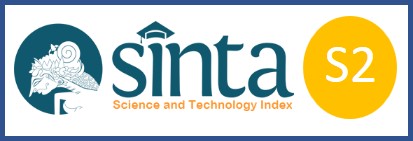Shadow Economy: Determinants and Its Impact on Foreign Direct Investment
Downloads
The shadow economy poses a significant threat to government revenue and the effectiveness of economic policies. This paper investigates the causes of the shadow economy and its influence on foreign direct investment (FDI). Our study employs the currency demand approach, a component of the indirect method, to identify the determinants of the shadow economy in a dataset covering 105 countries from 2001 to 2017. These countries are categorized into four income groups: high-income, upper-middle-income, lower-middle-income, and low-income. Parameter estimation is conducted using the Generalized Method of Moments (GMM) model, with robustness tests incorporating reference estimates from Partial Least Squares (PLS) and Fixed Effects Model (FEM). Our findings indicate that a higher GDP and lower interest rates are associated with reduced shadow economy activity. Elevated market interest rates increase the cost of funds in the informal sector, discouraging engagement in shadow economic activities due to reduced profitability. Furthermore, higher tax revenues correlate with intensified regulatory enforcement, increasing the risks associated with shadow economy involvement. A larger workforce and lower unemployment rates similarly diminish shadow economy activity. In the context of foreign direct investment (FDI), the shadow economy positively affects FDI flows when formal institutions, including legal frameworks, property rights protection, and regulatory systems, are either weak or overly burdensome. In such scenarios, economic actors may opt for informal channels like the shadow economy, offering a flexible and cost-effective alternative to the formal sector, a crucial consideration for foreign investors.
Abdullayevich, A. Q. (2015). Effects of Shadow Economy on Foreign Direct Investment. In Proceeding - Kuala Lumpur International Business, Economics and Law Conference 6, 3. https://www.klibel.com/wp-content/uploads/2015/04/E12C12_KLIBEL6_Econ_34_IVLpQPkk5B.pdf.
Ali, M., & Bohara, A. K. (2017). How does FDI Respond to the Size of Shadow Economy: An Empirical Analysis Under a Gravity Model Setting. International Economic Journal, 31(2), 159-178.
Arellano, M., & Bond, S. (1991). Some Tests of Specification for Panel Data: Monte Carlo Evidence and an Application to Employment Equations. The Review of Economic Studies, 58(2), 277. https://doi.org/10.2307/2297968
Buehn, A., & Schneider, F. (2012). Corruption and the shadow economy: like oil and vinegar, like water and fire? International Tax and Public Finance, 19(1), 172–194. https://doi.org/10.1007/s10797-011-9175-y
Buehn, A., & Schneider, F. (2012a), Shadow Economies Around the World: Novel Insights, Accepted Knowledge, and New Estimates. International Tax and Public Finance, 19, 139–171.
Chiarini, B., Marzano, E., & Schneider, F. (2013). Tax Rates and Tax Evasion: An Empirical Analysis of the Long-Run Aspects in Italy. European Journal of Law and Economics, 35, 273-293.
Cuong, H. V., Luu, H. N., & Tuan, L. Q. (2021). The Impact of the Shadow Economy on Foreign Direct Investment. Applied Economics Letters, 28(5), 391-396.
Esteller-Moré, A., Rizzo, L., & Secomandi, R. (2020). The heterogenous impact of taxation on FDI: A note on Djankov et al. (2010). Economics Letters, 186, 108775. https://doi.org/10.1016/j.econlet.2019.108775
Haberly, D., & Wójcik, D. (2015). Tax Heavens and the Production of Offshore FDI: An Empirical Analysis. Journal of Economic Geography, 15(1), 75-101.
Hansen, L. P. (1982). Large Sample Properties of Generalized Method of Moments Estimators. Econometrica, 50(4), 1029 -1054. https://doi.org/10.2307/1912775
Nikopour, H., Shah Habibullah, M., Schneider, F., & Law, S. H. (2009). Foreign Direct Investment and Shadow Economy: A Causality Analysis Using Panel Data (MPRA Paper No. 14485). https://mpra.ub.uni-muenchen.de/14485/1/MPRA_paper_14485.pdf
Sargan, J. D. (1958). The Estimation of Economic Relationships using Instrumental Variables. Econometrica, 26(3), 393. https://doi.org/10.2307/1907619
Schneider, F. (1997). The shadow economies of Western Europe. Economic Affairs, 17(3), 42–48. https://doi.org/10.1111/1468-0270.00041
Schneider, F. (2008). Shadow Economies and Corruption All Over the World: What Do We Really Know? In The shadow economy, corruption, and governance (pp. 122-187). UK: Edward Elgar Publishing.
Schneider, F. (2015). Size and development of the shadow economy of 31 European and 5 other OECD countries from 2003 to 2014: different developments?. Journal of Self-Governance and Management Economics, 3(4), 7-29.
Schneider, F. G., & Buehn, A. (2012). Shadow Economies in Highly Developed OECD Countries: What are the Driving Forces? SSRN Electronic Journal. https://doi.org/10.2139/ssrn.2161228
Schneider, F. G., & Buehn, A. (2013). Estimating the Size of the Shadow Economy: Methods, Problems and Open Questions (CESifo Working Paper Series No. 4448). https://doi.org/10.2139/ssrn.2353281
Schneider, F., & Enste, D. H. (2000). Shadow Economies: Size, Causes, and Consequences. Journal of Economic Literature, 38(1), 77–114.
Schneider, F., & Enste, D. H. (2013). The Shadow Economy: An International Survey (2nd ed.). Cambridge: Cambridge University Press. https://doi.org/10.1017/CBO9781139542289
Schneider, F. G., & Klinglmair, R. (2004). Shadow Economies Around the World: What Do We Know? SSRN Electronic Journal. https://doi.org/10.2139/ssrn.518526
Smith, P. (1994), Assessing the size of the underground economy: the Canadian statistical perspectives. Canadian Economic Observer, 11, 16–33.
Torgler, B., & Schneider, F. G. (2007). Shadow Economy, Tax Morale, Governance and Institutional Quality: A Panel Analysis. SSRN Electronic Journal. https://doi.org/10.2139/ssrn.960012
Zhanabekov, S. (2022). Robust determinants of the shadow economy. Bulletin of Economic Research, 74(4), 1017-1052.
Copyright (c) 2024 Unggul Heriqbaldi, Salwaa Fauziyyah Jatmiko

This work is licensed under a Creative Commons Attribution-ShareAlike 4.0 International License.
JIET (Jurnal Ilmu Ekonomi Terapan) (p-ISSN: 2541-1470; e-ISSN: 2528-1879) is licensed under a Creative Commons Attribution-ShareAlike 4.0 International License
Authors who publish with JIET (Jurnal Ilmu Ekonomi Terapan) agree to the following terms:
- The journal allows the author to hold the copyright of the article without restrictions.
- The journal allows the author(s) to retain publishing rights without restrictions
- The legal formal aspect of journal publication accessibility refers to Creative Commons Attribution ShareAlike 4.0 International License (CC BY-SA).












